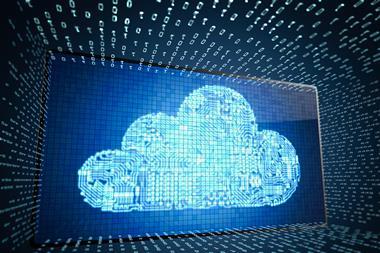Many insurance policies relate the cover they provide to damage to 'tangible' property. These policies were often designed to deal with traditional perils, such as fire or flood, at a time when the assets of a business lay predominantly in bricks and mortar. Things have changed. The modern reality is that many companies depend upon their IT systems and the data on them. Whether computer software and data can be classed as a form of 'property' is therefore a crucial question when it comes to assessing whether your risks are adequately covered. Clearly this issue also has an impact on insurers' exposure to claims.
The nature of software and data is relevant here. In essence, they consist of a code held in the form of a sequence of electromagnetic impulses. These impulses are stored on a medium which can be internal to the computer, such as the hard drive, or external (a CD-Rom or floppy disk).
Data and software are vulnerable. They can be quickly disrupted, corrupted or erased. At the flick of a switch it is possible to lose a database that cost millions of pounds to collate and arrange. Such disasters can and do strike, sometimes by virtue of simple accidents, but equally often as a result of power surges, virus attacks, or malicious acts.
In the US especially, there has been a growing appreciation that such losses (which can be significant) could possibly be claimed under the terms of policies focusing on property damage. Perhaps the most celebrated decisions have been those of Retail Systems Inc v CAN Insurance Co (469 NW 2d 735, 1991), which held that computer data, once combined on tapes or disks, would constitute physical property, and more recently American Guarantee & Liability Insurance Co v Ingram Micro Inc (2000 US Dist LEXIS 7299, No 99-185), which ruled that computers suffered 'physical damage' for the purposes of a claim under an insurance policy when data stored in their memory was corrupted or erased so as to hamper the computers' utility.
The Ingram Micro case received widespread press coverage in the US and there was much talk of the opening of floodgates for this type of claim. Insurers will therefore no doubt be relieved to hear of a decision in June last year, which came from the Virginia District Court (America Online Inc v St Paul Mercury Insurance, 207 F Supp 2d 459).
In that case, AOL faced claims that its new internet access software had caused physical damage in the form of deletion, corruption, and/or prevention of access to data stored on the claimants' computers. It sought the protection of its insurers against the costs of defending such claims under the terms of a policy which provided cover for damage to tangible property.
The policy did not define the meaning of 'tangible', but the Virginia Court referred back to the definition in Black's Law Directory. This defines 'tangible' as something 'having or possessing physical form; capable of being touched and seen; perceptible to the touch; tactile; palpable; compatible of being possessed or realised; readily apprehensible by the mind; real; substantial'.
However, having quoted this definition and a similar one in Webster's Dictionary, the court, interestingly, seemed to focus exclusively upon the part of the definition which referred to the need for the thing in question to be 'capable of being touched or perceptible to the senses', notwithstanding the fact that the definitions quoted plainly go wider. On that basis, it rejected the submission that damage to software or data was tangible property damage, and criticised the earlier decision in Ingram Micro as relying overmuch on the importance of computers in society, as opposed to the actual terms of the insurance policy involved. In the court's view, the losses claimed were more in the nature of loss of use than of physical damage, and therefore fell outside the scope of the policy.
Unfortunately, the legal position remains unclear, not just in the US but also in the UK. The suggestion of Sir Iain Glidewell in the St Albans v ICL case in 1997 to the effect that software and/or data would constitute 'property' or, more precisely, 'goods' when combined together with a dish or other physical medium, was undermined by the more recent (but unexplained) ruling in Horace Holman v Sherwood International, in which the judge simply stated that, in his opinion, software would not constitute 'goods'.
In reality, the debate as to whether software and data constitute a form of tangible property is unhelpful, and reflects the struggle to fit new technologies into a traditional legal framework. Software and data are well protected by the law relating to intellectual property. Data in the EU is further protected by specific legislation relating to databases.
The problem lies with ambiguous policy wordings, which leave the door open to legal argument over interpretation, especially when the amounts involved in the underlying claims are considerable.
Kit Burden is a partner, commercial and technology group, Barlow Lyde and Gilbert, Tel: 020 7643 8056, E-mail: kburden@blg.co.uk



















